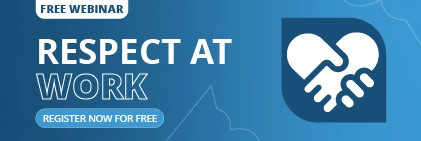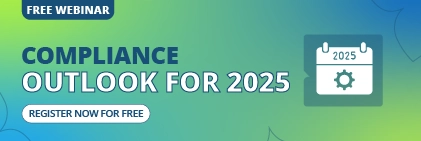Sex Discrimination Commissioner Kate Jenkins leads a survey on sexual harassment in the Australian workplace. This survey, undertaken by Roy Morgan Research, was conducted on 10,000 working individuals of all races and ages in Australia.
Here are the numbers on workplace sexual harassment from the study:
- Young people in the age group of 18 to 29 are most likely to be sexually harassed at work.
- 26% of Australian men and 39% of Australian women said that they have been sexually harassed at work in the last 5 years.
- 4 out of 5 harassers are men.
- Also, only 17% of the total sexually harassed people in the workplace muster up the courage to officially make a complaint.
The research also shows that sexual harassment can happen in any workplace, regardless of its size, geographic location or industry they operate in.
What are the Impacts of Sexual Harassment in the Workplace?
Sexual Harassment in the workplace is detrimental to the mental and, consequently, physical health of the employee, according to WHS. It also places businesses at risk of significant losses, such as a decrease in shareholder value, degradation of brand reputation and credibility, decrease in productivity, and an increase in employee turnover.
Vicarious Liability
Vicarious liability, often referred to as legal liability, is all about the employers’ responsibility to take all reasonable steps to train and have policies in place when it comes to things such as safety, privacy, bullying, harassment, and discrimination. For example, the legislative provisions under Section 133 of the Anti-Discrimination Act 1991 (Qld) and Section 106 of the Sex Discrimination Act 1984 (Cth) say that if an employee engages in sexual harassment with or without the involvement of the employer, directly or indirectly, not only the perpetrator-employee but also his/her employer is vicariously liable to compensate for the damages caused.
Read on to know why Sexual Harassment training is so important for your employees.
When it comes to Sexual Harassment, education, generally in the form of sexual harassment training is important for your employees, so they can identify behaviour that is sexual harassment, know their rights and, more importantly, the procedure to make complaints and resolve matters pertaining to sexual harassment.
What is the Complaints Procedure for Sexual Harassment?
Sentrient provides an easy-to-follow guide for your employees in the event that they are subject to an incident of sexual harassment. The points are in chronological order, the users should start from the top, and if their issue is not resolved, they shall go to the next avenue. This is not legal guidance but rather a good practical guide that you could use to compare with your current policies and procedures for identifying, reporting and resolving incidents of harassment, bullying, and discrimination.
Business Victoria has published an excellent FREE resource with a set of HR Policy and Procedure Templates. It also includes bullying, harassment and discrimination policies that you may like to use as a reference or to provide the basis for your own workplace policy and procedure for anti-bullying, anti-harassment and anti-discrimination. If you go to the Business Victoria website at www.business.vic.gov.au and search for HR Policy and Procedure Manual Template from the search bar on the home page, you can then download this document.
Tip: Once you are subject to sexual harassment or suspect the behaviour to be such, you should write the entire incident down with the exact time, date, location and the people involved. You should do it straight away, including all the details, whilst it is fresh in your memory.
Solve Internally
1. Calmly Confront the Person
If you feel, even so slightly, that there is a possibility of further sexual harassment and abuse, then you should completely avoid this point and move to point no. 2. But, if that is not the case then you should calmly but assertively make it clear to the doer that their behaviour was unwelcomed and humiliating and that you are aware of what comes under sexual harassment and what doesn’t.
2. Check the Policies
Check your employers’ workplace compliance policies, if there is one. The policies will help you understand your rights and also guide you through your next steps.
3. In Case of No Workplace Compliance Policies
If there are no workplace compliance policies or sexual harassment policies at your workplace, or they are ineffective, you have the following two avenues:
Choose Avenue 1 – Report To Your Supervisor/Manager
Reach out to your team leader, or your immediate senior, they can provide you with emotional support and also help confront the perpetrator and the seniors. If your seniors are involved go to Avenue 2.
Choose Avenue 2 – Report To Your Safety Representative/HR or Senior Manager
These professionals will help you feel safe, confront the perpetrator, report the issue and make sure it doesn’t happen again. If even avenue 2 doesn’t help you should not be hopeless, you should go for external help.
Solve Externally
In the event that your problems have not been taken seriously or handled in an appropriate manner at your workplace, there are a number of external organisations that can support you. Including Federal and State/Territories Authorities as listed below::
CTH – Australian Human Rights Commission
VIC – Victorian Equal Opportunity and Human Rights Commission
NT – Northern Territory Anti-discrimination Commission
ACT – ACT Human Rights Commission
WA – WA Equal Opportunity Commission
SA – SA Equal Opportunity Commission
QLD – Queensland Anti-discrimination Commission
NSW – NSW Anti-discrimination Board
TAS – Equal Opportunity Tasmania
You can also contact the Australian Human Rights Commission for advice.
Sexual Harassment is not always physical and right in front of your eyes; it can also be subtle and indirect. Regardless of the form of harassment, it has terrible effects on the individual’s mental health and also on those who experience or hear about such behaviour in the workplace.
Sentrient provides Australia’s #1 online workplace compliance system for SMBs with up to 200 staff and also those mid-tier organisations with between 200-1,000 staff. The online compliance system helps organisations create a safe, inclusive, and discrimination-free place for people to come to work and also ensures they meet their ethical and legal obligations. The Sentrient compliance platform includes legally endorsed and up-to-date online workplace courses, a workplace policy builder and an automated workplace compliance system.
Get a free demo here, or buy now here.
For any questions, call us at 1300 040 589 and ask to speak with one of our friendly team members.





